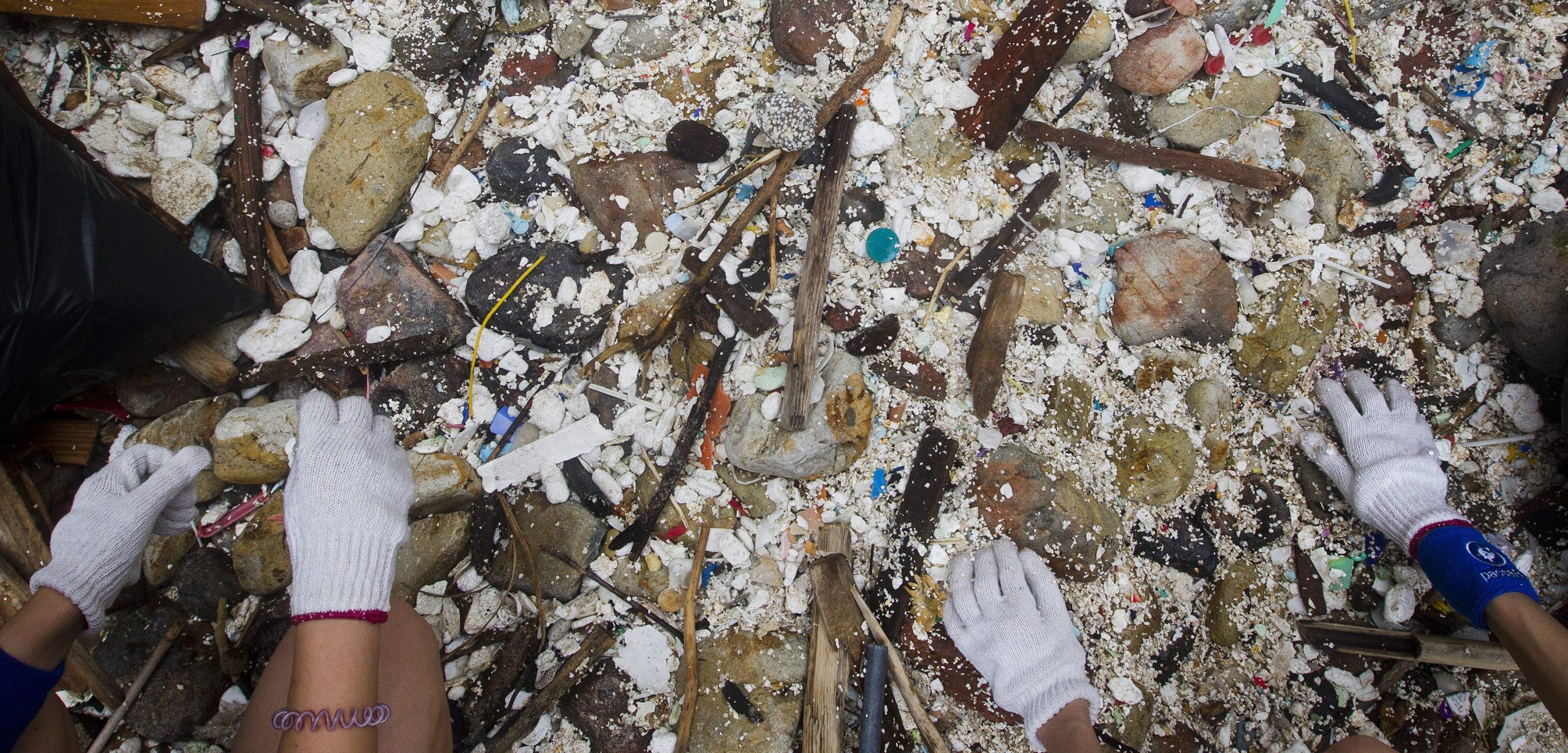China Has a Microplastic Pollution Problem
On Chinese beaches, researchers found microplastic concentrations thousands of times higher than in some other countries.
Article body copy
With the help of vaporized mercury gas and an arc of electricity, Jinping Peng can make certain types of plastic glow. When he turned his ultraviolet light on Chinese beaches—like a forensic detective searching through a crime scene—he found something troubling: hundreds of glowing plastic specks in every handful of sand.
Plastic pollution in the ocean is a global problem. But of the roughly 8 million tonnes of plastic waste now entering the oceans each year, China is responsible for about 30 percent. Though some of this plastic is likely the by-product of goods made for export, Peng’s research shows the local consequences of being the world’s biggest plastic polluter.
In his study, the first to investigate the level of microplastic pollution on Chinese shores, Peng and his colleagues found massive amounts of debris: between 5,000 and 8,700 microplastic pieces per kilogram of dry sand. The most common type was plastic fibers, which likely came from degraded fishing nets.
China’s microplastic pollution level is much higher than that seen in similar research conducted in other countries. On Germany’s Baltic coast, for instance, researchers found just seven microplastic pieces per kilogram. In Venice, Italy, the number was higher—2,175 pieces per kilogram—but still not nearly as high as China’s.
Some of the difference between China’s observed microplastic concentration and those reported for other countries could be because the team used a different measurement technique, says Peng, who’s an environmental chemist. Peng’s team used fluorescence microscopy to make the microplastic stand out against the sand. This technique triggers fluorescent whitening agents—chemicals found in some plastics that glow when put under ultraviolet light—to reveal the plastic. On the one hand, this approach may have detected plastic pieces other techniques would have missed. On the other, since these whitening agents can stick to items other than microplastics, such as bits of paper, the measured plastic concentration could have been artificially inflated, says Peng.
Still, he says, “There is no doubt that the situation of microplastic pollution in China is serious and needs to be considered urgently.”
“I hope my work can raise public awareness about microplastics in China and call for more [people] to join in the study of this topic,” he says.
Marine biologist Martin Thiel, who has studied marine microplastics for more than a decade but was not involved in this research, says that while China’s microplastic pollution problem is not particularly surprising, the country has been taking steps, such as reducing plastic bag use, for years. “I encourage the Chinese people to continue in their efforts to help reduce the plastic tsunami that currently hits the oceans,” Thiel says. “China has more than one billion inhabitants. They matter!”

